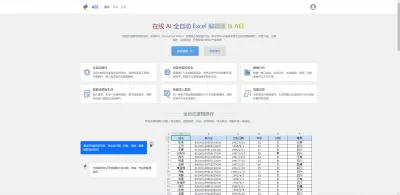OpenHuFu: An Open-Sourced Data Federation System
OpenHuFu is the open-sourced version of the spatial data federation system, Hu-Fu, in our VLDB'22 paper.
The appendix of the full paper can be referred to this PDF.
Project Description
Data isolation has become an obstacle to scale up query processing over big data, since sharing raw data among data owners is often prohibitive due to security concerns. A promising solution is to perform secure queries and analytics over a federation of multiple data owners leveraging techiniques like secure multi-party computation (SMC) and differential privacy, as evidenced by recent work on data federation and federated learning.
OpenHuFu is an open-sourced system for efficient and secure query processing on a data federation. It provides flexibility for researchers to quickly implement their algorithms for processing federated queries with SMC techniques, such as secret sharing, garbled circuit and oblivious transfer. With its help, we can quickly conduct the experimental evaluation and obtain the performance of the designed algorithms over benchmark datasets.
Compile OpenHuFu from Source Code
Prerequisites:
- Linux or MacOS
- Java 11
- Maven (version at least 3.5.2)
- C++ (generate TPC-H data)
- Python3 (generate spatial data)
- Git & Git LFS (Git Large File Storage)
Build OpenHuFu
Run the following commands:
- Clone OpenHuFu repository:
git clone https://github.com/BUAA-BDA/OpenHuFu.git
- Download big files from Git LFS(Large File Storage)
cd OpenHuFu git lfs install --skip-smudge git lfs pull
- Build:
cd OpenHuFu bash scripts/build/package.sh
OpenHuFu is now installed in release
Notes
If you use MacsOS, you need to add this to settings.xml(maven settings file):
<profiles> <profile> <id>macos</id> <properties> <os.detected.classifier>osx-x86_64</os.detected.classifier> </properties> </profile> </profiles> <activeProfiles> <activeProfile>macos</activeProfile> </activeProfiles>
Data Generation
Relational data: TCP-H
How to use it:
bash scripts/test/extract_tpc_h.sh cd dataset/TPC-H\ V3.0.1/dbgen cp makefile.suite makefile # If you use MacOS, you need to replace '#include <malloc.h>' with #include <sys/malloc.h> in dbgen make # Go to the root folder cd ../../.. # x is the number of database,y is the volume of each database(MB) bash scripts/test/generateData.sh x y
Spatial data
Spatial sample data: dataset/newyork-taxi-sample.data:
How to use it
Generate spatial data:
pip3 install numpy python3 scripts/test/genSyntheticData.py databaseNum dataSize [distribution name] [params]
The distributions we support and their params are as follow:
| Distribution | param1 | param2 |
|---|---|---|
| uni | low (default = -1e7) | high (default = 1e7) |
| nor | mu (default = 0) | sigma (default = 1e5) |
| exp | mu (default = 5e6) |
(If needed, you can modify scripts/test/genSyntheticData.py)
Notes
Each table is defined by two files in CSV and SCM format, and the names of the files serve as the actual names of the tables. <br/> The CSV file contains the column names and the data of the table, while the SCM file contains the column names and column types. The delimiter is used to separate different column fields, and it can be specified in the owner's configuration file.
Configuration File
OwnerSide
UserSide
Development procedure
- Develop your algorithms
- Aggregate:
class extends com.hufudb.openhufu.owner.implementor.aggregate.OwnerAggregateFunction /** * The class must contains a constructor function with parameters: * (OpenHuFuPlan.Expression agg, Rpc rpc, ExecutorService threadPool, OpenHuFuPlan.TaskInfo taskInfo) */
- Join:
class implements com.hufudb.openhufu.owner.implementor.join.OwnerJoin
- Set the algorithm for the query(example in owner.yaml):
openhufu: implementor: aggregate: sum: com.hufudb.openhufu.owner.implementor.aggregate.sum.SecretSharingSum max: null min: null join: com.hufudb.openhufu.owner.implementor.join.HashJoin
-
Build OpenHuFu
Follow the instructions in Section
Build OpenHuFuto build the project. -
Run OpenHuFu
We provide sample configurations for 3 owners in
release/configfolder. <br/> You can use the configuration to run our demo on a single machine, or modify the configuration files to deploy OpenHuFu on multiple machines. <br/>Please note that since the configuration files use relative paths, we need to
cd releasebefore running the command.Run demo on a single machine:
bash owner_all.shRun OpenHuFu on multiple machines:
bash owner.sh start ./config/owner{i}.jsonStop OpeHuFu:
bash owner.sh stop -
Run benchmarks
bash benchmark.sh
- Evaluating communication cost
Before running benchmarks on OpenHuFu, you can follow the instructions to evaluate communication cost of the query:
- Monitoring the port
# run the shell script as root # 8888 is the port number sudo bash scripts/test/network_mmonitor/start.sh 8888
- Calculating the communication cost
# run the shell script as root sudo bash scripts/test/network_mmonitor/monitor.sh
Data Query Language
- Plan
- Function Call
Supported Query Types
- Filter
- Projection
- Join
- equi join
- theta join
- Cross products
- Aggregate(inc. group-by)
- Limited window aggs
- Distinct
- Sort
- Limit
- Common table expressions
- Spatial Queries:
- range query
- range counting
- knn query
- distance join
- knn join
Evaluation Metrics
- Communication Cost
- Running Time
- Total Query Time
- Local Query Time
- Encryption Time
- Decryption Time
Related Work
If you find OpenHuFu helpful in your research, please consider citing our papers and the bibtex are listed below:
- Hu-Fu: Efficient and Secure Spatial Queries over Data Federation. Yongxin Tong, Xuchen Pan, Yuxiang Zeng, Yexuan Shi, Chunbo Xue, Zimu Zhou, Xiaofei Zhang, Lei Chen, Yi Xu, Ke Xu, Weifeng Lv. Proc. VLDB Endow. 15(6): 1159-1172 (2022). [paper] [slides] [bibtex]
Other helpful related work from our group is listed below:
-
DM-PFL: Hitchhiking Generic Federated Learning for Efficient Shift-Robust Personalization. Wenhao Zhang, Zimu Zhou, Yansheng Wang, Yongxin Tong. KDD 2023. [paper] [bibtex]
-
Efficient Approximate Range Aggregation Over Large-Scale Spatial Data Federation. Yexuan Shi, Yongxin Tong, Yuxiang Zeng, Zimu Zhou, Bolin Ding, Lei Chen. IEEE Trans. Knowl. Data Eng. 35(1): 418-430 (2023). [paper] [bibtex]
-
Hu-Fu: A Data Federation System for Secure Spatial Queries. Xuchen Pan, Yongxin Tong, Chunbo Xue, Zimu Zhou, Junping Du, Yuxiang Zeng, Yexuan Shi, Xiaofei Zhang, Lei Chen, Yi Xu, Ke Xu, Weifeng Lv. Proc. VLDB Endow. 15(12): 3582-3585 (2022). [paper] [bibtex]
-
Data Source Selection in Federated Learning: A Submodular Optimization Approach. Ruisheng Zhang, Yansheng Wang, Zimu Zhou, Ziyao Ren, Yongxin Tong, Ke Xu. DASFAA 2022. [paper] [bibtex]
-
Fed-LTD: Towards Cross-Platform Ride Hailing via Federated Learning to Dispatch. Yansheng Wang, Yongxin Tong, Zimu Zhou, Ziyao Ren, Yi Xu, Guobin Wu, Weifeng Lv. KDD 2022. [paper] [bibtex]
-
Efficient and Secure Skyline Queries over Vertical Data Federation. Yuanyuan Zhang, Yexuan Shi, Zimu Zhou, Chunbo Xue, Yi Xu, Ke Xu, Junping Du. IEEE Trans. Knowl. Data Eng. (2022). [paper] [bibtex]
-
Federated Topic Discovery: A Semantic Consistent Approach. Yexuan Shi, Yongxin Tong, Zhiyang Su, Di Jiang, Zimu Zhou, Wenbin Zhang. IEEE Intell. Syst. 36(5): 96-103 (2021). [paper] [bibtex]
-
Industrial Federated Topic Modeling. Di Jiang, Yongxin Tong, Yuanfeng Song, Xueyang Wu, Weiwei Zhao, Jinhua Peng, Rongzhong Lian, Qian Xu, Qiang Yang. ACM Trans. Intell. Syst. Technol. 12(1): 2:1-2:22 (2021). [paper] [bibtex]
-
A GDPR-compliant Ecosystem for Speech Recognition with Transfer, Federated, and Evolutionary Learning. Di Jiang, Conghui Tan, Jinhua Peng, Chaotao Chen, Xueyang Wu, Weiwei Zhao, Yuanfeng Song, Yongxin Tong, Chang Liu, Qian Xu, Qiang Yang, Li Deng. ACM Trans. Intell. Syst. Technol. 12(3): 30:1-30:19 (2021). [paper] [bibtex]
-
An Efficient Approach for Cross-Silo Federated Learning to Rank. Yansheng Wang, Yongxin Tong, Dingyuan Shi, Ke Xu. ICDE 2021. [paper] [slides] [bibtex]
-
Federated Learning in the Lens of Crowdsourcing. Yongxin Tong, Yansheng Wang, Dingyuan Shi. IEEE Data Eng. Bull. 43(3): 26-36 (2020). [paper] [bibtex]
-
Federated Latent Dirichlet Allocation: A Local Differential Privacy Based Framework. Yansheng Wang, Yongxin Tong, Dingyuan Shi. AAAI 2020. [paper] [bibtex]
-
Federated Acoustic Model Optimization for Automatic Speech Recognition. Conghui Tan, Di Jiang, Huaxiao Mo, Jinhua Peng, Yongxin Tong, Weiwei Zhao, Chaotao Chen, Rongzhong Lian, Yuanfeng Song, Qian Xu. DASFAA 2020. [paper] [bibtex]
-
Efficient and Fair Data Valuation for Horizontal Federated Learning. Shuyue Wei, Yongxin Tong, Zimu Zhou, Tianshu Song. Federated Learning 2020. [paper] [bibtex]
-
Profit Allocation for Federated Learning. Tianshu Song, Yongxin Tong, Shuyue Wei. IEEE BigData 2019. [paper] [slides] [bibtex]
-
Federated Machine Learning: Concept and Applications. Qiang Yang, Yang Liu, Tianjian Chen, Yongxin Tong. ACM Trans. Intell. Syst. Technol. 10(2): 12:1-12:19 (2019). [paper]
编辑推荐精选


TRELLIS
用于可扩展和多功能 3D 生成的结构化 3D 潜在表示
TRELLIS 是一个专注于 3D 生成的项目,它利用结构化 3D 潜在表示技术,实现了可扩展且多功能的 3D 生成。项目提供了多种 3D 生成的方法和工具,包括文本到 3D、图像到 3D 等,并且支持多种输出格式,如 3D 高斯、辐射场和网格等。通过 TRELLIS,用户可以根据文本��描述或图像输入快速生成高质量的 3D 资产,适用于游戏开发、动画制作、虚拟现实等多个领域。


ai-agents-for-beginners
10 节课教你开启构建 AI 代理所需的一切知识
AI Agents for Beginners 是一个专为初学者打造的课程项目,提供 10 节课程,涵盖构建 AI 代理的必备知识,支持多种语言,包含规划设计、工具使用、多代理等丰富内容,助您快速入门 AI 代理领域。


AEE
AI Excel全自动制表工具
AEE 在线 AI 全自动 Excel 编辑器,提供智能录入、自动公式、数据整理、图表生成等功能,高效处理 Excel 任务,提升办公效率。支持自动高亮数据、批量计算、不规则数据录入,适用于企业、教育、金融等多场景。


UI-TARS-desktop
基于 UI-TARS 视觉语言模型的桌面应用,可通过自然语言控制计算机进行多模态操作。
UI-TARS-desktop 是一款功能强大的桌面应用,基于 UI-TARS(视觉语言模型)构建。它具备自然语言控制、截图与视觉识别、精确的鼠标键盘控制等功能,支持跨平台使用(Windows/MacOS),能提供实时反馈和状态显示,且数据完全本地处理,保障隐私安全。该应用集成了多种大语言模型和搜索方式,还可进行文件系统操作。适用于需要智能交互和自动化任务的场景,如信息检索、文件管理等。其提供了详细的文档,包括快速启动、部署、贡献指南和 SDK 使用说明等,方便开发者使用和扩展。


Wan2.1
开源且先进的大规模视频生成模型项目
Wan2.1 是一个开源且先进的大规模�视频生成模型项目,支持文本到图像、文本到视频、图像到视频等多种生成任务。它具备丰富的配置选项,可调整分辨率、扩散步数等参数,还能对提示词进行增强。使用了多种先进技术和工具,在视频和图像生成领域具有广泛应用前景,适合研究人员和开发者使用。


爱图表
全流程 AI 驱动的数据可视化工具,助力用户轻松创作高颜值图表
爱图表(aitubiao.com)就是AI图表,是由镝数科技推出的一款创新型智能数据可视化平台,专注于为用户提供便捷的图表生成、数据分析和报告撰写服务。爱图表是中国首个在图表场景接入DeepSeek的产品。通过接入前沿的DeepSeek系列AI模型,爱图表结合强大的数据处理能力与智能化功能,致力于帮助职场人士高效处理和表达数据,提升工作效率和报告质量。


Qwen2.5-VL
一款强大的视觉语言模型,支持图像和视频输入
Qwen2.5-VL 是一款强大的视觉语言模型,支持图像和视频输入,可用于多种场景,如商品特点总结、图像文字识别等。项目提供了 OpenAI API 服务、Web UI 示例等部署方式,还包含了视觉处理工具,有助于开发者快速集成和使用,提升工作效率。


HunyuanVideo
HunyuanVideo 是一个可基于文本生成高质量图像和视频的项目。
HunyuanVideo 是一个专注于文本到图像及视频生成的项目。它具备强大的视频生成能力,支持多种分辨率和视频长度选择,能根据用户输入的文本生成逼真的图像和视频。使用先进的技术架构和算法,可灵活调整生成参数,满足不同场景的需求,是文本生成图像视频领域的优质工具。


WebUI for Browser Use
一个基于 Gradio 构建的 WebUI,支持与浏览器智能体进行便捷交互。
WebUI for Browser Use 是一个强大的项目,它集成了多种大型语言模型,支持自定义浏览器使用,具备持久化浏览器会话等功能。用户可以通过简洁友好的界面轻松控制浏览器智能体完成各类任务,无论是数据提取、网页导航还是表单填写等操作都能高效实现,有利于提高工作效率和获取信息的便捷性。该项目适合开发者、研究人员以及需要自动化浏览器操作的人群使用,在 SEO 优化方面,其关键词涵盖浏览器使用、WebUI、大型语言模型集成等,有助于提高网页在搜索引擎中的曝光度。


xiaozhi-esp32
基于 ESP32 的小智 AI 开发项目,支持多种网络连接与协议,实现语音交互等功能。
xiaozhi-esp32 是一个极具创新性的基于 ESP32 的开发项目,专注于人工智能语音交互领域。项目涵盖了丰富的功能,如网络连接、OTA 升级、设备激活等,同时支持多种语言。无论是开发爱好者还是专业开发者,都能借助该项目快速搭建起高效的 AI 语音交互系统,为智能设备开发提供强大助力。
推荐工具精选
AI云服��务特惠
懂AI专属折扣关注微信公众号
最新AI工具、AI资讯
独家AI资源、AI项目落地

微信扫一扫关注公众号









